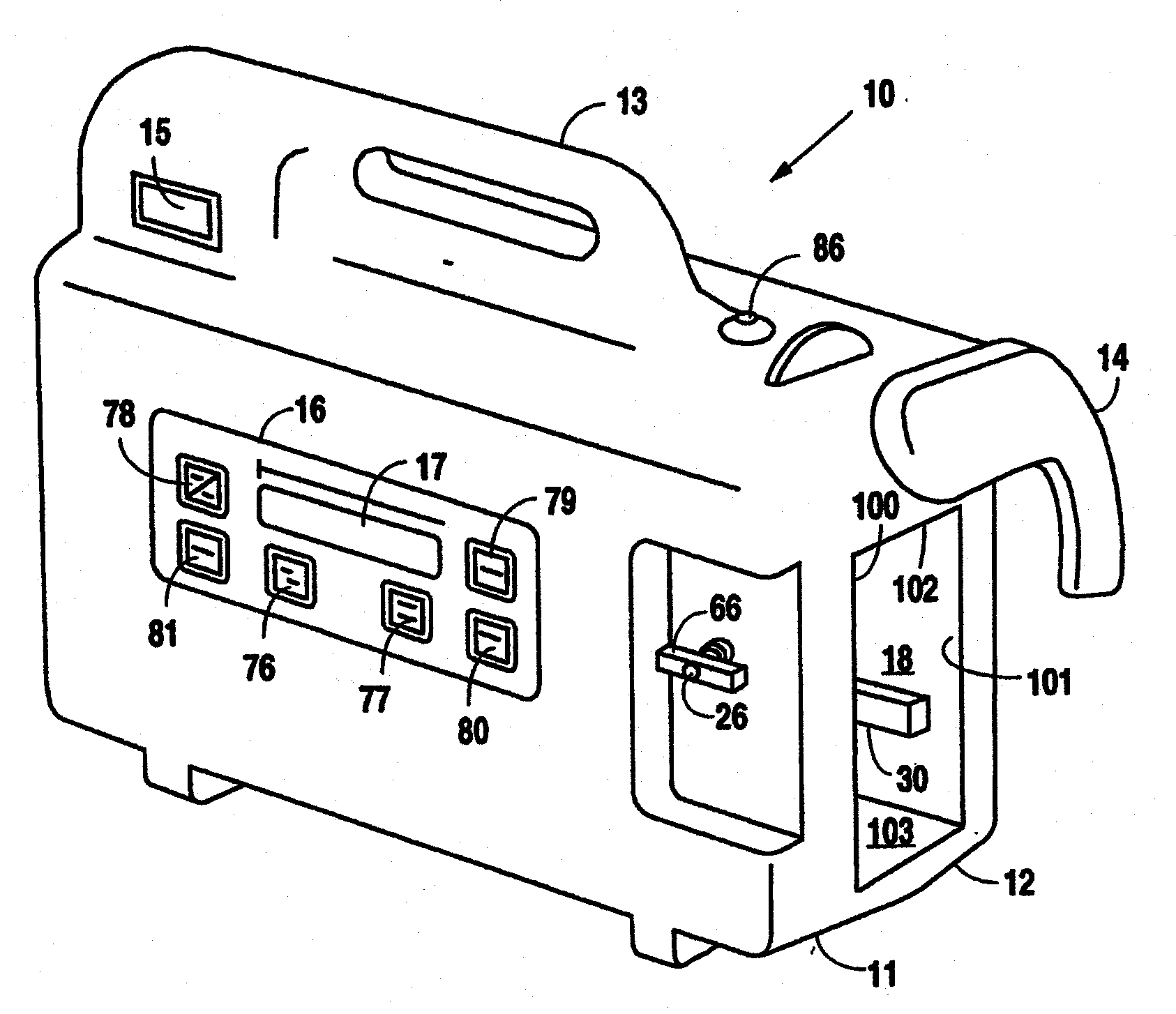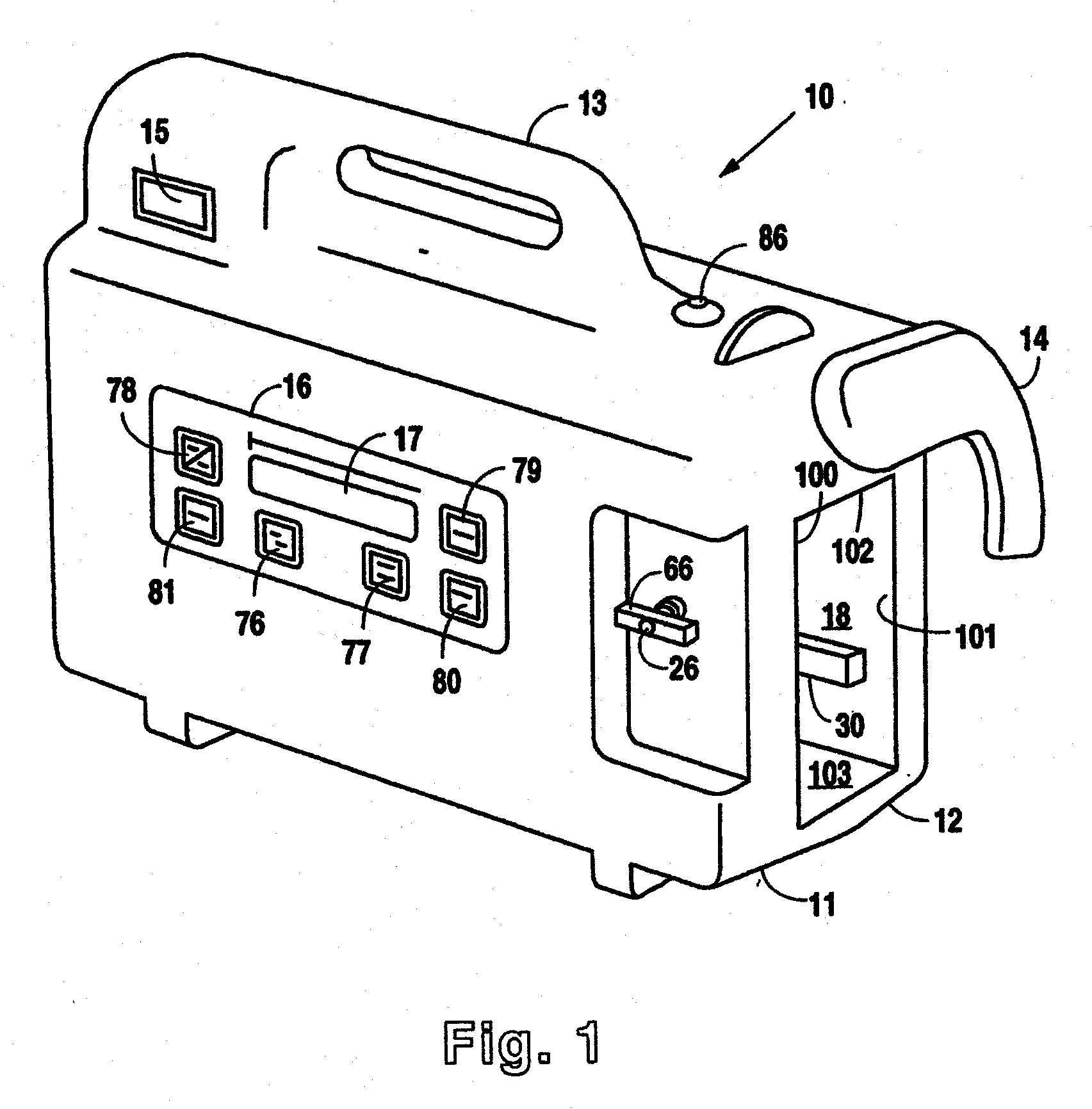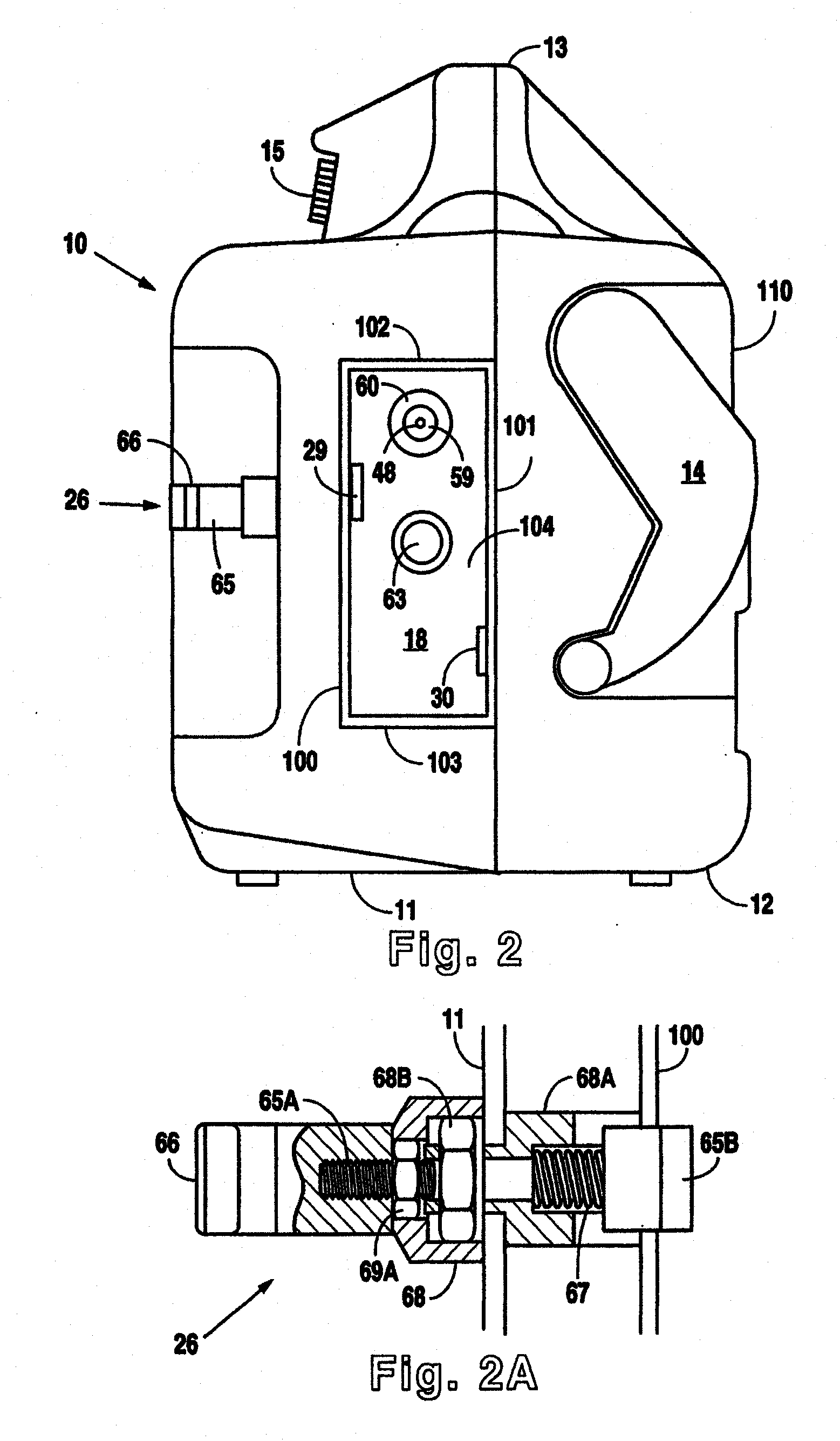Reduced pressure treatment system having a dual porosity pad
a treatment system and porosity pad technology, applied in the field of wound healing, can solve the problems of difficult closure, less able to successfully fight, diminished oxygen and nutrients, etc., and achieve the effect of reducing pressure to the porous material and reducing pressure to the tissue si
- Summary
- Abstract
- Description
- Claims
- Application Information
AI Technical Summary
Benefits of technology
Problems solved by technology
Method used
Image
Examples
Embodiment Construction
[0037]As illustrated in FIGS. 1 and 2, front housing 11 and rear housing 12 connect together using any suitable means such as screws and fasteners to provide wound closure vacuum pump 10 with a small, compact, and easily portable carrying case. Consequently, front housing 11 and rear housing 12 connect together to form handle 13 that permits easy carrying of the wound closure apparatus 10. Except as may be otherwise evident from this description, the carrying case of the vacuum pump 10 is substantially as described and shown in WIPO Design No. DM / 032185.
[0038]Front housing 11 includes power switch 15 that is movable between an on and off position to permit user control of the delivery of power to the wound closure apparatus 10. Keypad 16 and liquid crystal display (LCD) 17 mount to front housing 11 to permit the programming of the wound closure apparatus 10. Chamber 18 is defined by integrally formed interior side walls 100 and 101, top wall 102, bottom wall 103 and rear wall 104. S...
PUM
| Property | Measurement | Unit |
|---|---|---|
| diameter | aaaaa | aaaaa |
| size | aaaaa | aaaaa |
| pore size | aaaaa | aaaaa |
Abstract
Description
Claims
Application Information
 Login to View More
Login to View More - R&D
- Intellectual Property
- Life Sciences
- Materials
- Tech Scout
- Unparalleled Data Quality
- Higher Quality Content
- 60% Fewer Hallucinations
Browse by: Latest US Patents, China's latest patents, Technical Efficacy Thesaurus, Application Domain, Technology Topic, Popular Technical Reports.
© 2025 PatSnap. All rights reserved.Legal|Privacy policy|Modern Slavery Act Transparency Statement|Sitemap|About US| Contact US: help@patsnap.com



